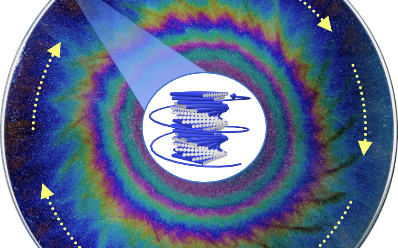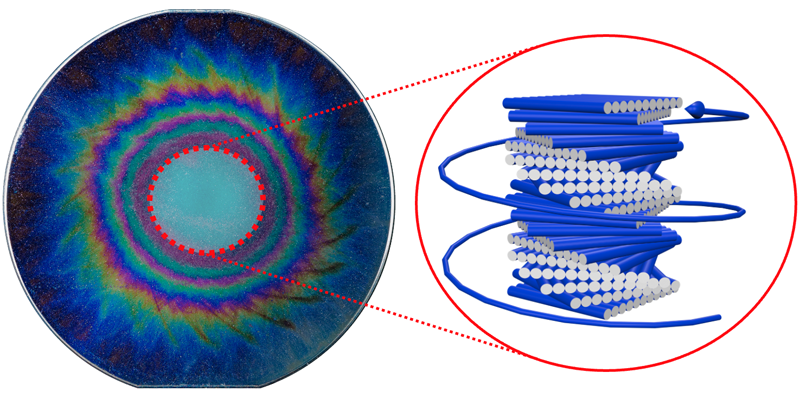Institut Charles Sadron News

Publié le 20/08/2024 par Felix Olivier
Researchers from Institut Charles Sadron (CNRS, Université de Strasbourg) and Laboratoire de Chimie et Physique - Approche Multi-échelles des milieux Complexes (Université de Lorraine) prepared helicoidally organized cellulose-based model architectures with unprecedented complexity. To achieve this, they combined layer-by-layer assembly and grazing incidence sputtering to control the sequence of deposited materials and the in-plane alignment of cellulose nanofibrils in each layer of the film. They have succeeded in producing chiral structures with different orientations, pitches and numbers of turns. They have demonstrated experimentally and theoretically that the optical properties of these complex architectures can be conveniently tuned by choosing different values for these parameters.
These results, published in the journal Advanced Materials, show that this additive manufacturing method is unique in that it allows for the incorporation of various substructures in the same film, which is highly appealing for tuning the optical response of the material and designing composite films with damage resistance and/or optical filtering functionalities.

Figure: Optical photograph showing the interference colors observed for a left-handed helicoidal film prepared on a silicon wafer. The diameter of the sample is 5 cm.
Reference
R. Mujica, A. Augustine, M. Pauly, Y. Battie, G. Decher, V. Le Houérou, O. Felix. Nature-Inspired Helicoidal Nanocellulose-Based Multi-Compartment Assemblies with Tunable Chiroptical Properties. Adv. Mater. 2024, 36, 2401742.